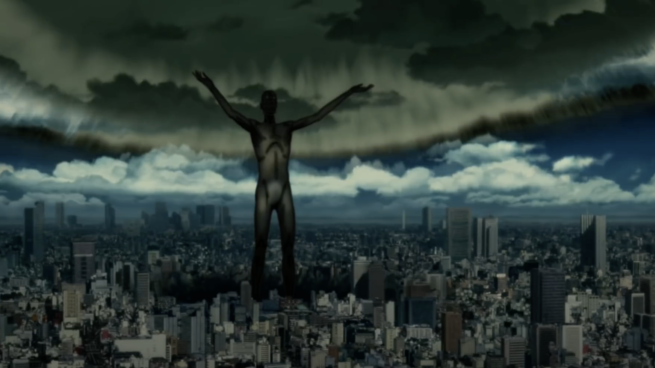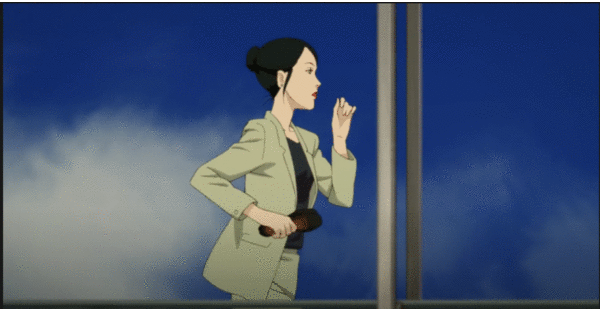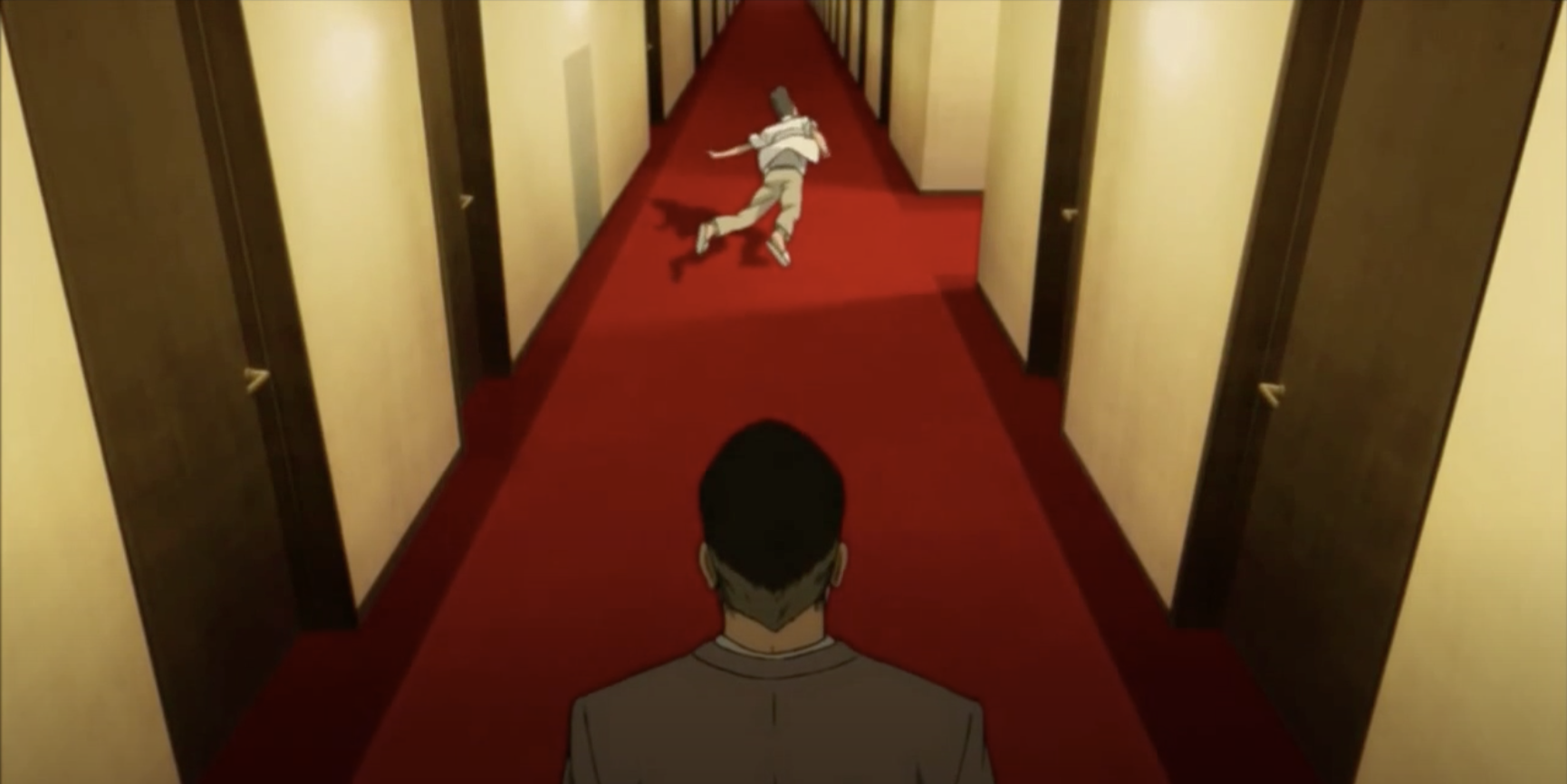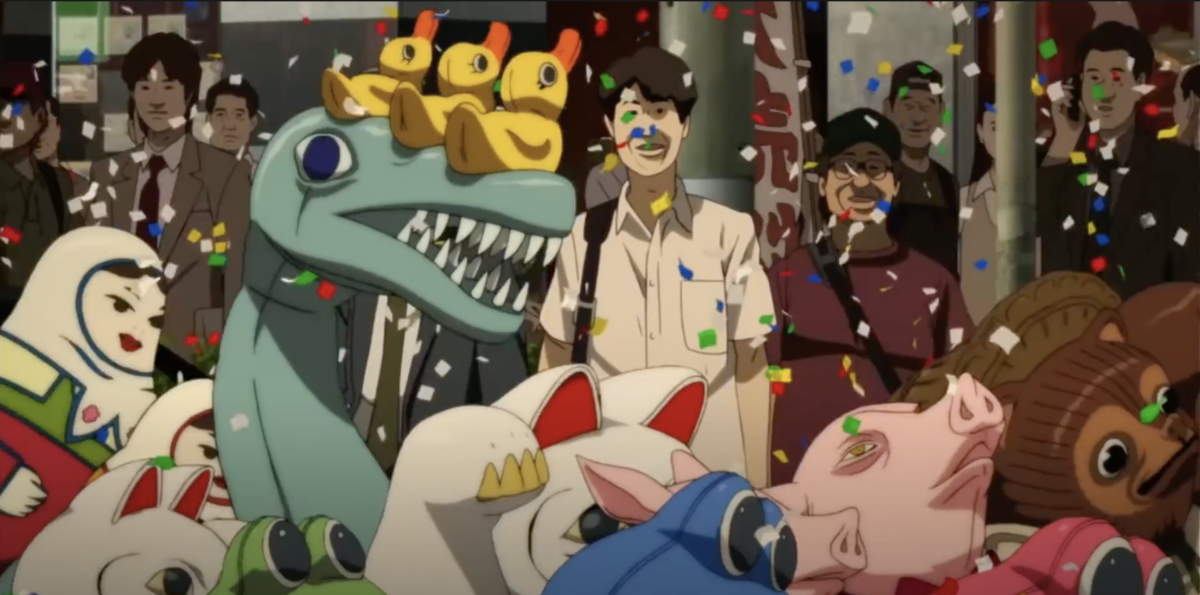The Plot of Paprika explained
To understand Paprika, we need to sort a few things out. First, there’s what’s happening and why it’s happening. Second, there’s Atsuko Chiba’s personal story. And third, we have the subplot involving Detective Konakawa. Once you separate these three threads, Paprika is far more approachable.
Chairman Inui dastardly plan: dreams and reality merge
Let’s start with what’s happening.
If we boil it down, Paprika is simply: a bad guy uses technology in an attempt to take over the world but is defeated. That’s pretty classic. It becomes more convoluted because the technology involves dreams and shared dreaming and the merging of dreams and reality.
Why and how is this happening?
The DC Mini 1.0 lets you watch someone else’s dreams. But the still-in-progress DC Mini 2.0 lets you experience someone else’s dreams. It’s through the DCM2 that our bad guy, Chairman Inui, wreaks havoc.
Inui is wheelchair-bound and has relied on dreams as a kind of sanctuary. He gives a big speech about trying to protect the dream world from the intrusion of the DC Mini and all it entails. But, in actuality, he wants to transform reality into a dream. That way he can transcend the limits of his handicap. You may have noticed the progression. We see Inui in his wheelchair. Then using tree roots for legs. Then using Osanai’s body. Then reborn in his final, giant nightmare form, legs completely functional.


Atsuko Chiba and Paprika: the ‘you’ you hide
While Inui’s villainy drives the story of Paprika, we follow Atsuko Chiba. We view almost everything through her POV. Which is why the beginning of Inui’s plot plays out like a mystery. Chiba and the others on the DC Mini project have no idea what Inui’s doing, so neither does the viewer. We watch Chiba and the others struggle to figure out why one teammate jumps out a window. Why another’s gone missing. The meaning of the monstrous parade that’s intruding across dreams.
Chiba is similar to Inui in that she’s freer in dreams than she is in reality. Paprika director Satoshi Kon expresses this duality in the juxtaposition between Chiba and Paprika. Chiba is dark-haired, serious, sharp. Paprika is bright, happy, caring. They’re two sides of the same coin. Yet distinct. Paprika doesn’t identify as Chiba. Chiba doesn’t identify as Paprika. But they know they’re one and the same.

Where Inui desires nothing more than to replace his real self with his dream self, Chiba has no such desire. She’s been content with her division. But the division represents her inability to feel her emotions. There’s part of her she won’t accept. A byproduct of Inui’s conspiracy is the tearing down of the veil that had kept Paprika and Chiba apart. At the same time Inui reaches his final form and is reborn, Chiba and Paprika become one and cycle through their own rebirth—infant to child to teen to young woman to full adult. Both our hero and villain have broken through their limitations.
Thankfully, the reborn Chiba/Paprika hybrid eats Inui’s nightmare form, proving the power of her transformation over his. Chiba’s true self transcends the Chairman’s delusion.
Detective Konakawa’s hallway mystery party
Now let’s look at Detective Konakawa’s subplot.
Narratively, it’s pretty misleading, as Konakawa begins the movie. Meaning that, initially, he’s more of the focus than Paprika, who is simply guiding Konakawa through dream therapy. That opening sequence shows off the power of the DCM2 and sets up the duality of Paprika/Chiba. But it also puts a lot of importance on the unsolved homicide and Konakawa’s recurring nightmare. This can be, on the first watch, confusing. As someone may think Konakawa’s story is more important than it is.

To be clear, nothing in the main plot depends on Konakawa solving the homicide in the hallway or uncovering the cause of his nightmare. If he does or doesn’t, Inui’s and Chiba’s actions remain the same. So if you’re trying to just understand the events in Paprika, you can kind of ignore everything involving Konakawa.
With that said, Konakawa is incredibly important to Paprika‘s core theme. Think back to Inui and Chiba and how each of them found empowerment through dreams. For Inui, it’s the ability to walk again. For Chiba, it’s emotional freedom. Konakawa’s subplot is similar. He has a pain point he refuses to confront: his failure to become a filmmaker with his, now-deceased, former best friend.
Konakawa’s denial of cinema is a byproduct of guilt. If he rejects cinema, he can reject his past and thus avoid the negative feelings that have mounted within him over the years. His nightmares are the direct result of these repressed feelings, manifesting in stylistic, big-screen-like adventures. Tarzan. James Bond. etc. Over the course of Paprika, Konakawa confronts his history, solves the riddle of his nightmares, and, like Chiba, frees himself. The dream version of his best friend, who is Konakawa’s own Paprika, tells him, “You didn’t do anything wrong. You just lived out our movie in real life. That’s why you became a cop. It’s truth that came from fiction. Always remember that.”
The secret ingredient to the main theme of Paprika is…
It’s Komakawa’s dream-version of his best friend who reveals the key line. “It’s truth that came from fiction.”
Dreams are fiction. They aren’t real. They’re often nonsense. But they derive from our hopes and fears and repressions. In studying our dreams, we find the truth of who we are and what we desire. To ignore them is to ignore a part of ourselves that is desperate to be heard.
To that end, Satoshi Kon presents to us three characters with three very different relationships with their dreams. One who is destroyed. One who is transformed. And one who finds peace. Much of the exposition and happenings in Paprika set up these thematic arcs and play into the power dreams have over us.
In conclusion
Paprika, on the most superficial level, is just a bad guy using technology to become more powerful.
Thematically, it’s about our relationship with dreams, with each of the main characters having some dream-related issue that builds to an individual statement on the human-dream power dynamic.
Hopefully Paprika has been explained for you! If you have more questions about Paprika, leave them below and we’ll try to answer!


I’d say the protagonists’ profession plays a key role in both ‘Perfect Blue’ and ‘Paprika.’ Professions require personas.
Here, Dr Chiba’s profession as a psychiatrist shapes her everyday persona. She helps people with very personal work. Her clients’ dreams and repressed desires are the content she goes to work on in partnership with them.
As a result, she has to establish firm professional boundaries. Psychotherapists are keenly aware of the transference and projection issues they have to help clients keep inside a certain realistic frame.
And we see Dr Chiba deal with this. She interacts mostly with men. Her avatar appears in their dreams—in settings that are anything but clinical—and invites relationship and disclosure. All the more reason why, when her clients wake up, she must remain very chill and tamp down any expectations. Her clinical persona is a practiced one, and very necessary.
Notice too that Paprika is more than just an avatar/alter ego for Dr Chiba, as she at first assumes. She is also the mutual creation of both Dr Chiba and the inventor. (Clue: look at her hair.) Paprika is their dream daughter, a shared fiction that emerges as truth.
Thank you for an intriguing discussion!
A good analysis of Paprika. I only just watched it recently, and its excellent for a now older animated film.
I think I was really confused about the last part, when Chiba marries Tokito, it seemed to come out of nowhere.
we are with you bro
she was repressing her complete love and awe of him throughout, it comes out in the dream.
hello bro i want talk with you please reply me